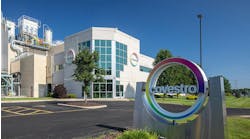Digital Transformation Lags In Chemical Industry
At a recent ARC Industry Forum many discussions revolved around digital transformation. According to a presentation by Mike Williams, ARC associate, although industry research indicates that there has been more than 75% of the process industry participating in Industry 4.0 technology evaluation or pilot projects, there is still less than 25% of the industry moving beyond the pilot phase. It would appear that the process industries are lagging behind other industry segments such as automotive and other discrete manufacturers.
According to Williams, “Many times, pilot projects find technically viable solutions,” but come up short in creating a business case that would allow the CFOs and CEOs to demand more investment. The question raised: Why?
Digital Transformation In The Process Industry
Williams in his presentation identified some of the top challenges facing early digital transformation implementation. These include:
• Lack of a concrete value proposition to justify investment
• Islands of information prevalent in existing infrastructure
• Lack of seamless integration between IoT and OT solutions
• Reliability issues resulting in random periods of abnormal faulting in real time
• Conflicting organization design issues between IT and OT‐ roles and responsibilities
• Lost tribal knowledge -- “How do we capture and digitize knowledge before it is gone?”
• Cybersecurity issues resulting in IP theft and/or denial of service
• Need to upgrade skills and human assistance tools to improve efficiency, enhance decision‐making, and higher employee engagement
Although the deployment of new Industry 4.0 technologies might improve asset utilization -- one of the most pressing issues in the process industries -- this alone does not make or save money for the enterprise. The newly available capacity must be put to good use, such as by filling production orders for newly developed products.
BASF’s Digital Transformation Experience
Michael Krauss, senior expert, Control Systems Technology for BASF, acknowledged that requirements in the process industries, oil & gas and chemicals in particular, are different than in discrete manufacturing. Many of the process industry value drivers are centered around improving work efficiency and avoiding incidents. Krauss commented that for companies like BASF, revenue-per-employee has an important impact on the bottom line. “Energy and raw material are key factors in the early steps of the value chain, and safety is important above all.”
A BASF initiative that utilizes bar coding and mobile digital devices provides necessary information about every asset in the plant to operators, maintenance, turnaround personnel and material managers. Of course, this requires that key vendors must help make this information available digitally. The vendor list includes the automation systems suppliers such as ABB, but also extends to other areas such as maintenance, engineering and the enterprise. Krauss provided some examples of where BASF has deployed digital technologies. These include:
• Using a drone to measure the thickness of a tank’s wall
• Automatically scanning workers when they enter a facility to ensure that they are wearing the necessary protective clothing and other gear
• Analyzing the welds on all control valves deployed
• Utilizing advanced analytics with vibration monitoring and other sensors to monitor pumps
• Performing predictive maintenance to avoid heat exchanger fouling and improving the reliability of pumps and compressors
BASF also produced a video to highlight two key technologies in what it refers to as “Maintenance 4.0.” First, the use of Microsoft’s HoloLens technology to allow personnel on site to contact remote experts about problematic plant equipment. Second, the use of additive manufacturing/3D printing to not only produce a part, but to allow the “freedom of design” to improve the part.
[callToAction ]
Krauss concluded that while the very different value drivers in discrete manufacturing make that sector a regular showcase for Industry 4.0 technologies, a digital transformation is nevertheless under way in the process industries. Digital technologies such as those discussed in his presentation help address the major process industry-specific value drivers. While effects from massively disruptive new technologies have not been observed so far, digital and non-digital concepts alike clearly are on the horizon for tomorrow in the process industry. However, with limited resources (time, budget and head count), only the most promising concepts that address the key value drivers can be realized.
Dow Chemical’s Digital Transformation Starts with MES
Angela Morris, MES Global Improvement Leader at Dow Chemical, used a symphony orchestra analogy to describe Dow’s history and progress in manufacturing execution systems (MES). Dow began its digital transformation in 2008 addressing the need for vertical integration between the enterprise and the shop floor. Early on in this journey, ARC Advisory Group’s consultants helped the company identify the value-creating use cases and define the functional requirements needed to address the operational technology (OT) gaps between the company’s new ERP solution and highly diverse shop-floor assets. (Dow’s vertical integration project was a response to end-of-life issues with legacy MES systems, which were architecturally incompatible with the new ERP solution.)
Key needs to be addressed by the Dow MES/MOM program were:
• Flexibility and Extensibility: Varied use cases with different infrastructure starting points
• Integrated: The architecture needs to avoid “siloed” information domains
• Automated Systems: Systems need to work together much like a symphony orchestra in which different sections perform their respective parts while in harmony with each other
Morris described the value-case categories for investment in a vertical integration solution.
These are:
• Overall equipment effectiveness (OEE)
• Product lifecycle management (PLM)
• Production operation management (POM). The goal was to have these functions all “waltz” together with accuracy and coordination
One of the key learnings from the program was the barrier of reinvestment cost. The solution required incremental value creation with phased reinvestment to be successful. Given the technology constraints at the time and existing architectural compatibility issues, the full value of vertical integration was not realized; so the program was placed on hold. However, much of the front-end analysis of functional requirements derived and economic justification have been leveraged into a restructured effort under the Industry 4.0 banner using new breakthrough technologies such as virtualization and analytics. The MES installed base is now being repositioned for duty as edge services supporting enterprise-based real-time execution applications.
Morris explained that if an Industry 4.0 application needs to have real-time performance, providing legacy MES servers at the edge may be the answer. Morris further stated that MES systems can play a role in the digital transformation of the manufacturing shop floor by “bridging the reality of the installed base, which most likely will remain for a long time, to the innovative ideas and capabilities of Industry 4.0 solutions.”
It is not economically feasible for companies such as Dow Chemical to “rip and replace” the still-functioning legacy systems, so an incremental migration path approach is needed. Morris commented that it is important to “integrate, but maintain flexibility and scalability.” MES architecture and associated functionality must evolve over time, as its mission and functions change.
A Journey, Not A Destination
The ARC Industry Forum proved that the digital transformation journey in process industries is well under way, but not without challenges. The process industries, particularly the oil and gas and chemical sectors, have unique challenges when compared to the discrete manufacturing sectors of industry.
Integration of operational technologies (OT) with both information technologies (IT) and engineering technologies (ET) is increasingly important. Having a plan for migrating from the existing data and information systems is a key starting point. Don’t try to do this alone; many technology suppliers can help. However, be sure they are flexible and open to working with other technology providers to help achieve your objectives. The ultimate architecture will require both horizontal and vertical integration across many current silos.
Be sure to include the workforce when developing your digital transformation plans. People as well as technology are important to the success of the transformation. Understand that the transformation will require investment. Often, the investment will be competing with other opportunities in your enterprise. It is essential that your executives both support and become an integral part of the digital transformation team.
Key steps to begin your successful journey to digital transformation:
• Start with a team, define your vision, and then create your strategy. Executive support is essential and helps to align culture, training, etc.
• Identify the challenges, assess the business case, and define the actions required to obtain executive buy-in and funding
• Address the people, process, and organizational issues along with the technological ones
• Pilot the application of technologies. Look for challenges and evaluate for measurable success (e.g., KPIs)
• Don’t expect all pilot-level applications to work. Learn from those that don’t work and promote the ones that do
• Scale-up, transform and continue to roll out across other plants and, if appropriate, across the enterprise
• Never neglect to recognize the importance of effective cybersecurity and understand that since these challenges evolve constantly, so must your countermeasures
Remember that digital transformation is a journey, not a destination. Transformational technology is already available, but it’s likely that things will accelerate from here.
Dick Hill is vice president at ARC Advisory Group. He is part of the management team at ARC responsible for developing the strategic direction for ARC products, services, and geographical expansion. Dick has over 35 years of experience in the areas of manufacturing and automation. As a process engineer, he gained experience in oil refinery operations and applications of advanced process control. Later, he expanded this knowledge of manufacturing solutions applied to other process industries. Dick is a graduate of Lowell Technological Institute with a BS in Chemical Engineering. He has completed post graduate courses in network technologies and relational database structures at Northeastern University.



